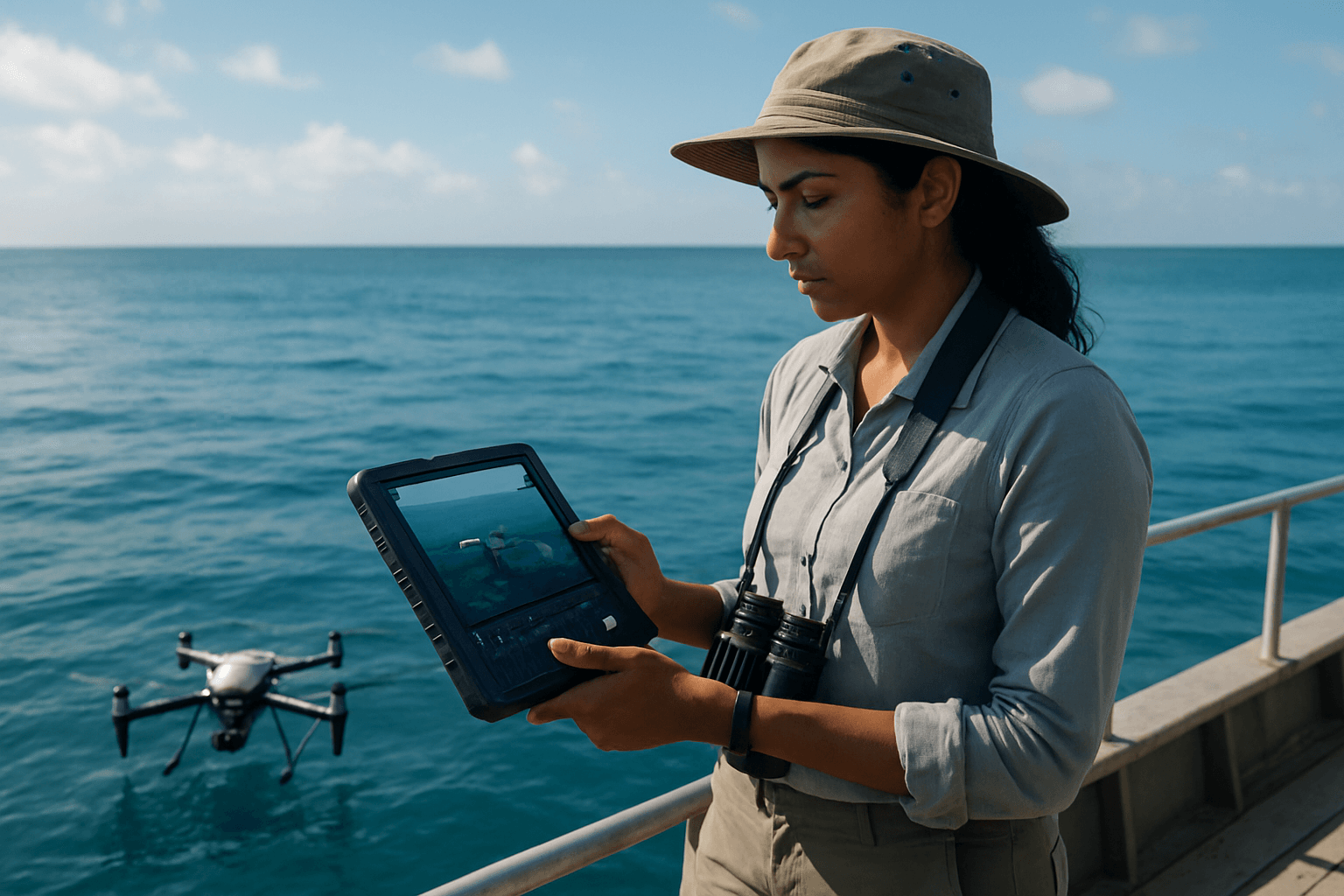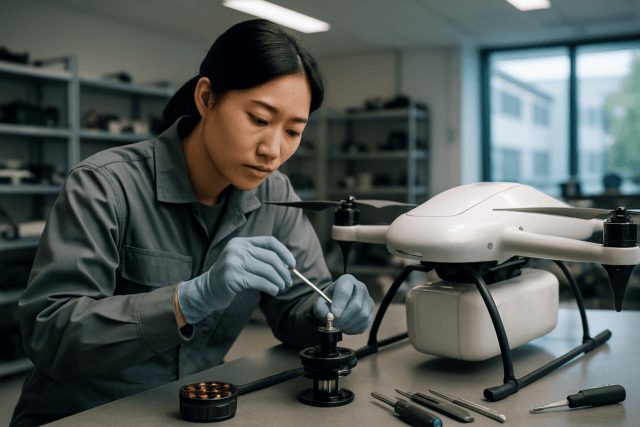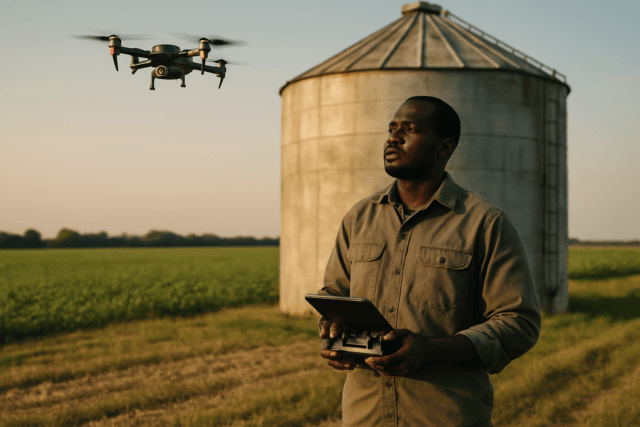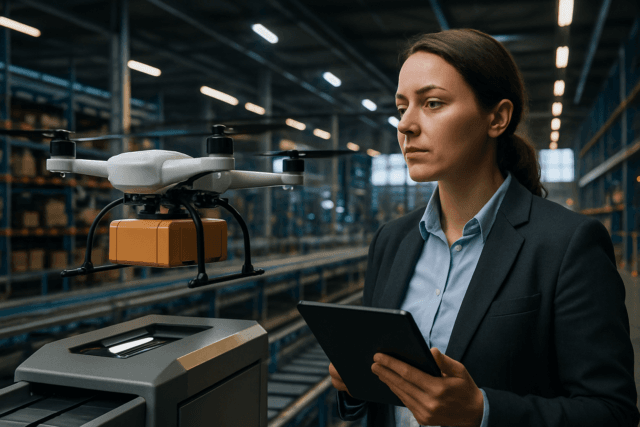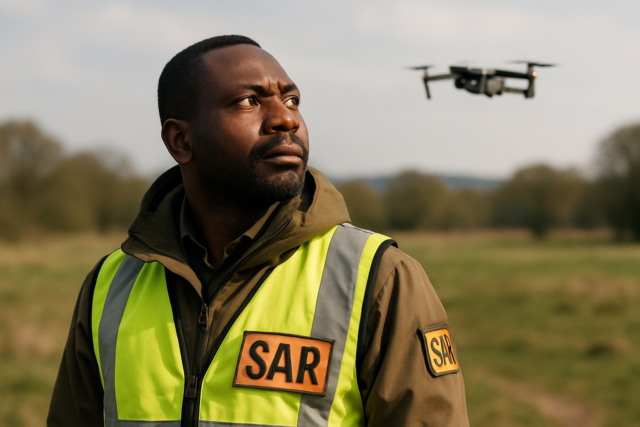Our oceans, vast and enigmatic, are confronting unprecedented threats from climate change, pollution, and overfishing. At the forefront of defense against these challenges are Marine Protected Areas (MPAs), designated zones crucial for conserving biodiversity, restoring habitats, and promoting sustainable resource management. Yet, effectively monitoring these expansive and often remote underwater realms has historically been a monumental task, fraught with logistical complexities and high costs. Enter drone technology, an innovative solution rapidly transforming how we perceive, protect, and manage our invaluable marine ecosystems.
The Imperative of Marine Protected Areas (MPAs)
Marine Protected Areas serve as critical sanctuaries for oceanic life, safeguarding vital habitats like coral reefs, seagrass beds, and deep-sea trenches, while offering refuge to countless species. Their establishment is a testament to a global commitment to ocean health, aiming to reverse degradation and ensure the resilience of marine environments for future generations. However, the sheer scale and dynamic nature of the ocean make the enforcement and ecological assessment within these protected zones a formidable undertaking. Increasing threats to marine environments necessitate advanced monitoring methods to ensure MPAs can fulfill their conservation goals effectively.
Traditional Monitoring Challenges in Vast Ocean Environments
Historically, marine monitoring has relied on conventional methods such as manned vessels, aircraft, and human divers. While valuable, these approaches come with significant limitations. They are often costly, time-consuming, and can only cover limited areas, making comprehensive, frequent surveys challenging. Furthermore, many critical marine habitats are remote, hazardous, or inaccessible to human-operated equipment, leaving vast stretches of protected areas unmonitored. Traditional methods also carry the risk of disturbing sensitive wildlife, potentially skewing data or causing stress to animals. The data collected might also suffer from lower resolution or infrequent updates, failing to provide the real-time insights needed for dynamic conservation efforts.
Diverse Drone Applications in Marine Monitoring
The integration of Unmanned Aerial Vehicles (UAVs), commonly known as drones, into marine conservation has ushered in a new era of monitoring capabilities, offering versatility and precision across a multitude of applications.
Surveillance and Enforcement
Drones are proving to be indispensable eyes in the sky for deterring illegal activities within MPAs. They can detect illegal fishing vessels and poaching activities, offering a cost-effective alternative to traditional patrol methods. Real-time surveillance of maritime traffic helps monitor unauthorized vessel entry and prevent potential damage to sensitive areas. Equipped with high-definition cameras, drones provide undeniable visual evidence for enforcement, enhancing the effectiveness of conservation laws.
Wildlife Tracking and Population Assessment
One of the most impactful applications of drones is in the non-invasive monitoring of marine wildlife. Drones can track migratory patterns and assess the population dynamics of marine mammals such as whales, dolphins, seals, and manatees, providing crucial insights into their behavior and distribution. They can accurately count and identify marine species, even those swimming just below the ocean’s surface in shallow waters. The minimal noise and disturbance produced by drones, especially when operated at appropriate altitudes, make them ideal for observing sensitive animals without causing undue stress, a significant advantage over manned aircraft or boats.
Habitat Mapping and Health Assessment
Drones excel at capturing high-resolution imagery for detailed marine environment mapping. This capability is vital for assessing the health of critical habitats like coral reefs, enabling scientists to detect bleaching events and monitor their progression with unparalleled precision. Beyond reefs, drones are used to map seagrass beds, intertidal zones, and coastlines, providing data to monitor changes like coastal erosion and land use. The ability to generate 3D models from drone imagery offers an improved understanding of complex underwater ecosystems, allowing researchers to measure structural complexity and track changes over time.
Pollution Detection and Mitigation
Marine pollution, particularly plastic waste and oil spills, poses an enormous threat. Drones offer a rapid and efficient means of detection. They can identify oil spills and hydrocarbon leaks using specialized thermal imaging cameras, even in low visibility or at night, allowing for quicker response and minimizing environmental impact. Drones are also instrumental in mapping marine plastic pollution hotspots, providing crucial data for targeted clean-up efforts. Some advanced drones can even be equipped with mechanisms to collect water samples remotely, further aiding in environmental monitoring. Furthermore, autonomous surface vehicles (ASVs) like the WasteShark, a type of water drone, are designed to collect debris and biomass directly from the surface of waterways, preventing pollution from reaching the open sea.
Advantages of Drone Technology for Marine Conservation
The widespread adoption of drones in marine conservation is driven by several compelling advantages over traditional methods:
- Cost-Effectiveness: Drones significantly reduce operational costs by minimizing the need for expensive manned expeditions, ships, or aircraft.
- Enhanced Safety: By performing tasks in remote, hazardous, or extreme weather conditions, drones eliminate the risk to human operators, enhancing safety protocols in marine research and enforcement.
- Increased Efficiency and Coverage: Drones can cover vast areas quickly and repeatedly, providing more frequent and comprehensive data collection than traditional surveys.
- High-Resolution and Real-time Data: Equipped with advanced cameras, sensors, and real-time data transmission capabilities, drones deliver high-resolution imagery and immediate insights, which are critical for timely decision-making.
- Less Invasive: Their ability to operate with minimal noise and disturbance makes them ideal for observing sensitive marine wildlife and habitats, ensuring more natural behavior is recorded.
Challenges and Limitations in Drone Deployment
Despite their immense potential, the deployment of drones in marine environments is not without its hurdles.
Regulatory Hurdles
Navigating the complex landscape of airspace restrictions, permits, and specific legislation remains a significant challenge, especially when operating within or near protected areas. Compliance with aviation authorities (like the FAA in the U.S.) and local conservation agencies is essential and often requires specific permits for scientific or administrative use.
Technical Constraints
Drone operations are subject to technical limitations such as battery life, which can restrict flight duration and the amount of data collected per mission. Harsh marine weather conditions, including strong winds, rain, and salt spray, can affect drone performance and durability. Furthermore, the sheer volume of high-resolution data collected by drones necessitates robust data processing and analysis capabilities. Concerns also exist regarding the potential noise impact of drones on sensitive marine life, though continuous efforts are being made to develop quieter designs and protocols.
Operational Considerations
Effective drone deployment requires trained pilots with expertise in both drone operation and marine science. Careful flight planning is essential, as is selecting the appropriate drone type (e.g., fixed-wing for large area surveillance, multirotor for agile inspections, or marine-specific/hybrid drones) for specific tasks.
The Future of Drone Technology in Marine Monitoring
The trajectory of drone technology in marine monitoring points towards increasingly sophisticated and autonomous systems.
Advanced Sensors and AI
Future developments will see greater integration of multispectral, hyperspectral, LiDAR, and acoustic sensors to capture a wider range of data, including bathymetric mapping and passive acoustic monitoring of marine mammals. Artificial intelligence (AI) is already playing a pivotal role in processing vast datasets, identifying marine species from video footage, detecting pollution, and enabling autonomous navigation and decision-making for drones, even in challenging underwater conditions.
Underwater and Hybrid Drones
While aerial drones are effective for surface and shallow-water monitoring, autonomous underwater vehicles (AUVs) and remotely operated vehicles (ROVs) are expanding capabilities for deeper exploration and monitoring, inspecting critical underwater infrastructure, and collecting eDNA samples. Hybrid drones that combine the capabilities of aerial and underwater vehicles are also emerging, offering versatile solutions for diverse marine environments.
Swarm Technology and Collaboration
The future may also involve fleets of drones working in coordinated “swarms” to cover even larger areas more efficiently, sharing data, and collaboratively executing complex monitoring tasks, from environmental surveys to defense operations.
Improved Regulations
As drone technology evolves, so too will the regulatory frameworks governing its use. Efforts are underway to establish clearer, unified international standards for drone operations in conservation, balancing technological advancement with environmental protection and safety.
Conclusion: A New Era for Ocean Stewardship
Drones are transforming marine conservation, offering an unprecedented ability to monitor, understand, and protect our oceans. By providing cost-effective, safe, and highly efficient methods for data collection, they empower scientists and conservationists with the insights needed for informed decision-making. From deterring illegal activities and tracking elusive wildlife to mapping fragile habitats and detecting pollution, drones are proving to be invaluable allies in the fight for ocean health. As technology continues to advance, their capabilities will only grow, cementing their role as essential tools in ushering in a new era of proactive and effective ocean stewardship.

